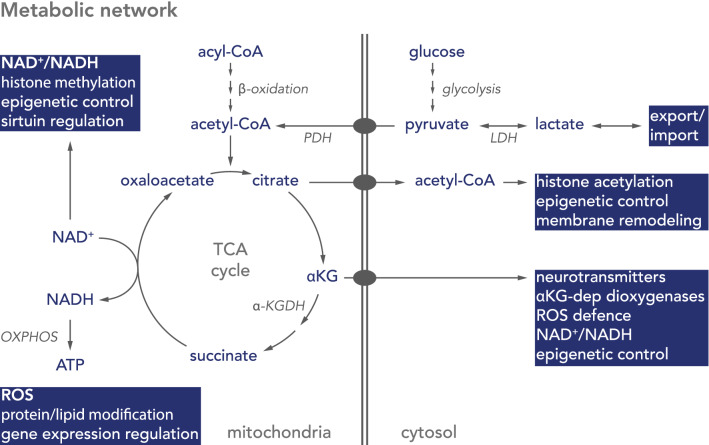Fig. 1.
Schematic diagram of metabolic pathways important in neurogenesis. In astrocytes glucose is metabolised to pyruvate via glycolysis, metabolised by lactate dehydrogenase (LDH), and exported as lactate. Neurons take up astrocyte-derived lactate to convert it back to pyruvate. Pyruvate is imported into mitochondria and converted by the pyruvate dehydrogenase complex (PDH) to acetyl-CoA, which enters the citric acid (TCA) cycle. Acetyl-CoA is also generated by breakdown of fatty acids (acyl-CoA) during β-oxidation. The TCA cycle condenses oxaloacetate with acetyl-CoA to form citrate, which either acts as precursor for cytosolic acetyl-CoA or is metabolised in the TCA cycle to α-ketoglutarate (αKG). Mitochondrial NADH is oxidised by NADH-ubiquinone oxidoreductase (complex I) of the oxidative phosphorylation system (OXPHOS), while β-oxidation- or TCA cycle-derived FADH2 reduces ubiquinone via the electron transfer flavoprotein-ubiquinone oxidoreductase (ETF-QO) or succinate-ubiquinone oxidoreductase (complex II), respectively

